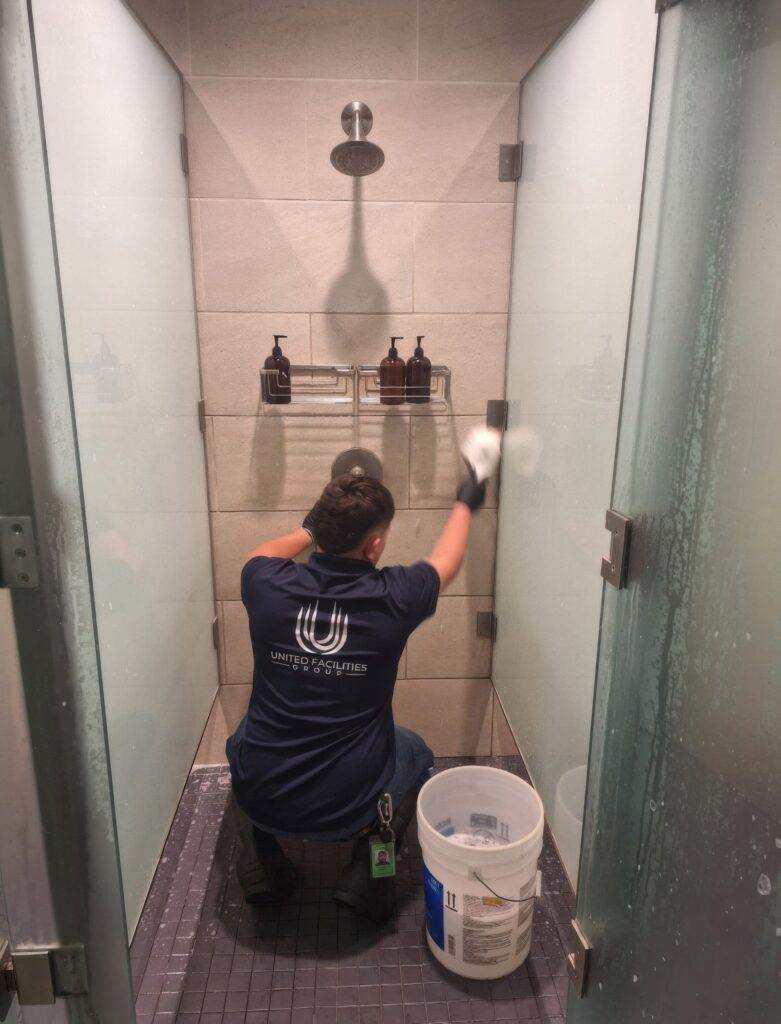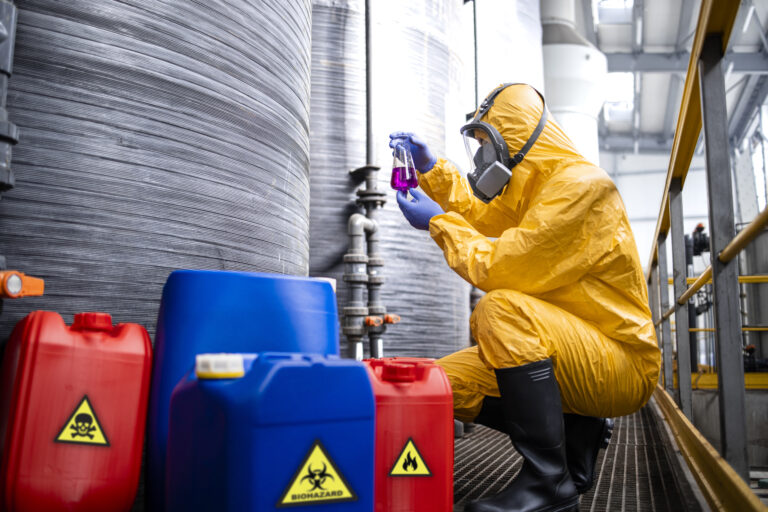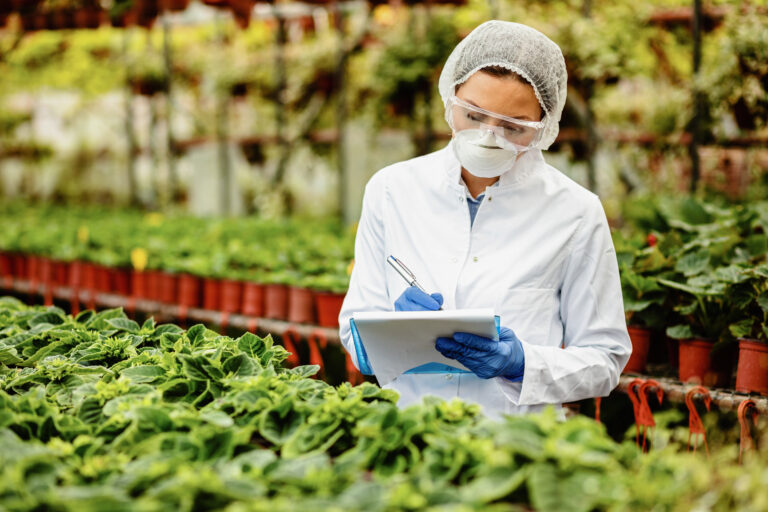In recent years, the importance of sustainability and environmental responsibility has gained significant traction across various sectors, including facility management. Green cleaning regulations have emerged as a vital component of this movement, aiming to reduce the environmental impact of cleaning products and practices. These regulations not only focus on the materials used but also emphasize the methods employed in maintaining cleanliness within facilities.
The shift towards green cleaning is driven by a growing awareness of the harmful effects that traditional cleaning agents can have on both human health and the environment. As a result, many jurisdictions are implementing regulations that mandate the use of eco-friendly cleaning products and practices. Green cleaning regulations are designed to promote healthier indoor environments while minimizing the ecological footprint of cleaning operations.

They often encompass guidelines for the selection of cleaning products, equipment, and procedures that align with sustainability goals. By adhering to these regulations, facilities can contribute to a cleaner planet while also enhancing the well-being of their occupants. As we delve into the specifics of Sacramento’s green cleaning regulations in 2025, it becomes evident that these measures are not merely a trend but a necessary evolution in facility management practices.
Key Takeaways
- Green cleaning regulations aim to promote environmentally friendly cleaning practices and reduce the use of harmful chemicals in cleaning products.
- Sacramento’s Green Cleaning Regulations in 2025 require facilities to use certified green cleaning products and implement sustainable cleaning practices.
- Facilities in Sacramento must comply with specific requirements such as using green cleaning products, providing employee training, and maintaining records of cleaning activities.
- Green cleaning offers benefits such as improved indoor air quality, reduced environmental impact, and a healthier and safer workplace for employees in Sacramento facilities.
- Challenges in adhering to green cleaning regulations include finding effective green cleaning products, managing costs, and ensuring compliance with evolving regulations.
Overview of Sacramento’s Green Cleaning Regulations in 2025
As of 2025, Sacramento has established comprehensive green cleaning regulations aimed at promoting sustainable practices within its facilities. These regulations are part of a broader initiative to enhance environmental stewardship and public health in the region. The city has recognized the need for stringent guidelines that govern the use of cleaning products and methods, ensuring that they align with eco-friendly standards.
This includes a mandate for the use of certified green cleaning products that meet specific environmental criteria, thereby reducing harmful chemical exposure for both workers and building occupants. In addition to product selection, Sacramento’s regulations also address operational practices. Facilities are encouraged to adopt cleaning methods that minimize water usage and energy consumption.
This holistic approach not only supports environmental sustainability but also fosters a culture of responsibility among facility managers and staff. By 2025, compliance with these regulations has become essential for all public and private facilities operating within Sacramento, reflecting a collective commitment to creating healthier spaces for everyone.
Implementation and Compliance Requirements for Sacramento Facilities
To effectively implement Sacramento’s green cleaning regulations, facilities must adhere to a set of compliance requirements designed to ensure accountability and transparency. First and foremost, facilities are required to conduct an assessment of their current cleaning practices and inventory of cleaning products. This assessment serves as a baseline for identifying areas that require improvement and for developing a transition plan towards greener alternatives.
Facilities must document their findings and outline steps they will take to comply with the new regulations. Training is another critical component of compliance. Staff members must be educated on the importance of green cleaning practices and how to properly use eco-friendly products.
This training not only enhances staff knowledge but also empowers them to take ownership of their roles in maintaining a sustainable environment. Regular audits and inspections are also mandated to ensure ongoing compliance with the regulations. Facilities must be prepared to demonstrate their adherence to these guidelines through documentation and reporting, fostering a culture of accountability in their operations.
Benefits of Green Cleaning for Sacramento Facilities
The adoption of green cleaning practices offers numerous benefits for facilities in Sacramento. One of the most significant advantages is the improvement in indoor air quality. Traditional cleaning products often contain volatile organic compounds (VOCs) that can contribute to respiratory issues and other health problems.
By switching to green cleaning products, facilities can significantly reduce these harmful emissions, creating a healthier environment for occupants. Moreover, green cleaning practices can lead to cost savings over time. While there may be an initial investment in eco-friendly products and training, the long-term benefits often outweigh these costs.

For instance, using less harmful chemicals can extend the lifespan of building materials and furnishings, reducing replacement costs. Additionally, improved employee health can lead to decreased absenteeism and increased productivity, further enhancing the overall efficiency of facility operations.
Challenges and Obstacles in Adhering to Green Cleaning Regulations
Despite the clear benefits of green cleaning regulations, facilities in Sacramento may face several challenges in adhering to these guidelines. One significant obstacle is the potential higher upfront costs associated with transitioning to eco-friendly products and practices. While many green cleaning solutions are becoming more affordable, some facilities may still find it challenging to allocate budget resources for this transition, particularly if they are operating under tight financial constraints.
Another challenge lies in the need for comprehensive training and education for staff members. Transitioning to green cleaning requires not only new products but also new methods and techniques. Ensuring that all employees are adequately trained can be time-consuming and may require additional resources.
Furthermore, some staff may resist change or be skeptical about the effectiveness of green cleaning products compared to traditional options. Overcoming these hurdles necessitates strong leadership and a commitment to fostering a culture of sustainability within the organization.
Impact of Green Cleaning Regulations on Health and Safety in Sacramento Facilities
The implementation of green cleaning regulations has a profound impact on health and safety within Sacramento facilities. By prioritizing eco-friendly products, these regulations help mitigate health risks associated with exposure to toxic chemicals commonly found in traditional cleaning agents. This is particularly important in environments such as schools, healthcare facilities, and offices where vulnerable populations may be present.
In addition to improving air quality and reducing chemical exposure, green cleaning practices contribute to overall safety by promoting better hygiene standards. Facilities that adopt rigorous cleaning protocols using environmentally friendly products can reduce the spread of germs and pathogens, leading to healthier environments for occupants. This is especially crucial in light of recent global health challenges that have underscored the importance of maintaining clean and safe spaces.
Cost Considerations and Budgeting for Green Cleaning in Sacramento Facilities
When considering the transition to green cleaning practices, facilities in Sacramento must carefully evaluate their budgetary constraints and cost considerations. While there may be an initial investment required for eco-friendly products and training programs, it is essential to view these costs as long-term savings rather than immediate expenses. Many green cleaning products are designed to be more concentrated than traditional options, meaning that smaller quantities can achieve the same level of cleanliness.
Additionally, facilities should consider potential savings from reduced health-related costs associated with improved employee well-being. Healthier work environments can lead to lower healthcare costs, decreased absenteeism, and increased productivity among staff members. By conducting a thorough cost-benefit analysis, facility managers can make informed decisions about budgeting for green cleaning initiatives that align with both financial goals and sustainability objectives.

Future Outlook and Trends in Green Cleaning Regulations for Sacramento Facilities
Looking ahead, the future outlook for green cleaning regulations in Sacramento appears promising as awareness continues to grow regarding environmental sustainability and public health concerns. As technology advances, we can expect an increase in innovative eco-friendly cleaning solutions that are both effective and affordable. This evolution will likely make it easier for facilities to comply with regulations while maintaining high standards of cleanliness.
Moreover, as more organizations recognize the importance of corporate social responsibility, there will likely be an increased demand for transparency regarding cleaning practices. Facilities that prioritize green cleaning will not only comply with regulations but also enhance their reputation among clients and stakeholders who value sustainability efforts. In this context, Sacramento’s commitment to green cleaning regulations will serve as a model for other cities looking to implement similar initiatives, ultimately contributing to a broader movement towards healthier environments across the nation.
FAQs
What are the green cleaning regulations affecting Sacramento facilities in 2025?
In 2025, Sacramento facilities are required to adhere to stricter green cleaning regulations aimed at reducing the use of harmful chemicals and promoting environmentally friendly cleaning practices.
What are some key components of the green cleaning regulations in Sacramento?
Key components of the green cleaning regulations in Sacramento include the use of certified green cleaning products, proper labeling and storage of cleaning chemicals, and the implementation of environmentally friendly cleaning procedures.
Why are these green cleaning regulations being implemented in Sacramento?
These regulations are being implemented to reduce the environmental impact of cleaning practices, improve indoor air quality, and promote the health and well-being of building occupants and cleaning staff.
How will these regulations affect facilities in Sacramento?
Facilities in Sacramento will need to transition to using certified green cleaning products, train staff on environmentally friendly cleaning practices, and ensure compliance with proper labeling and storage of cleaning chemicals.
What are the potential benefits of complying with these green cleaning regulations?
Complying with these regulations can lead to improved indoor air quality, reduced environmental impact, and a healthier and safer environment for building occupants and cleaning staff.











